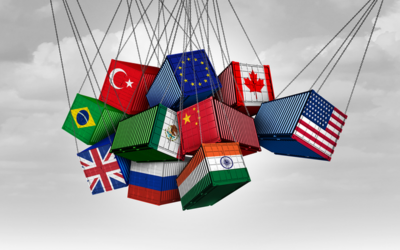It’s not enough to simply write about data any longer; the world wants visuals. Infographics are a way to communicate complex stories, using graphics, icons and illustrations to create a single image that is easily understandable. Naturally, infographics have proven an excellent aid in expressing high volumes of information in a clear, visually appealing manner. These are useful to sales teams trying to explain business value and are a great way to explain different types of processes.
The adage “A picture is worth a thousand words” refers to the idea that a complex idea can be conveyed with just a single still image. Also, it characterizes one of the main goals of visualization, namely making it possible to quickly absorb large amounts of data.
Although graphics have been in use for hundreds of years, the escalating need to display complex concepts has lead to an increase in the popularity of infographics. Many businesses can benefit from a little graphic visualization. Below are a few ways T/K uses graphics to bring new life to messaging and presentations:
- Social Media Guide
Try using a infographic to visually streamline a social media plan. We created a Franchisee’s Guide to Social Media for Shane’s Rib Shack. From Facebook to Foursquare and beyond, this road map outlines each step a Franchisee should take in setting up, monitoring and engaging followers through their social media properties. - PR Program
If you are putting together a PR program or launching a product try using a graphic to map out a timeline of key components. T/K regularly uses this technique to help show clients each step of their PR Program. The single-page layout, using a combination of icons and key messages, clearly presents a comprehensive program. - Product Cycle
Does your product have a unique life cycle or manufacturing process? One of our clients, WinCup did. So we created a infographic explaining the unique benefits of the VIO biodegradable foam cup, explaining the cup’s lifecycle from production to decomposition in a landfill. Customers could read a multi-page brochure to learn about the product, but instead this depicture captures the product benefits through icons and illustrations, so many of the product features can be easily understood through a common visual language that is accompanied by text.
Not only are there plenty of opportunities and reasons to add infographics and other visualizations into your content repertoire, but they may be easier to produce than you think. If you want to spruce up your documents, blog posts, and presentations, here are some free online tools that can help:
- Visual.ly http://visual.ly/ – This is a new tool that allows you to create and share infographics. Its tools are fairly standard in terms of outputting sets of data, but Visual.ly makes it easier to create more robust infographics that are less scientific and more user friendly.
- Wordle http://www.wordle.net/ – This is an effective tool for generating word clouds. If you’re creating a presentation for a client that is looking to rebrand, you can submit the company’s URL into Wordle so it spits out a colorful design of the most popular words used on their website. You can also create your own word clouds by just adding text or keywords that you want to use.
- Many Eyes http://www-958.ibm.com/software/data/cognos/manyeyes/ – This IBM Research tool gives you two choices: an option to browse through existing sets of data, and a second that lets you use your own. The public database includes everything from population density across the U.S. to Internet browsers by popularity. The best part of this tool is that you have many different options insofar as the final product – from creating a world map to a network diagram.
- Google Public Data Explorer http://www.google.com/publicdata/home – Like IBM, Google has made a public version of one of its research tools called Public Data Explorer. It lets you choose from existing data sets or input your own data. After uploading your information you have the option to make your dataset public for others to see and use. These charts also can be embedded on your website or blog.
Infographics can be a very valuable tool and are more impactful than traditional written text. They can be used throughout your brand identity by having a home on your website, sales sheets, presentations, press releases and more. Now is the time to get visual so start by adding an infographic to your marketing tool kit.
By, Stephanie Silvera | @Steph_Silvera


